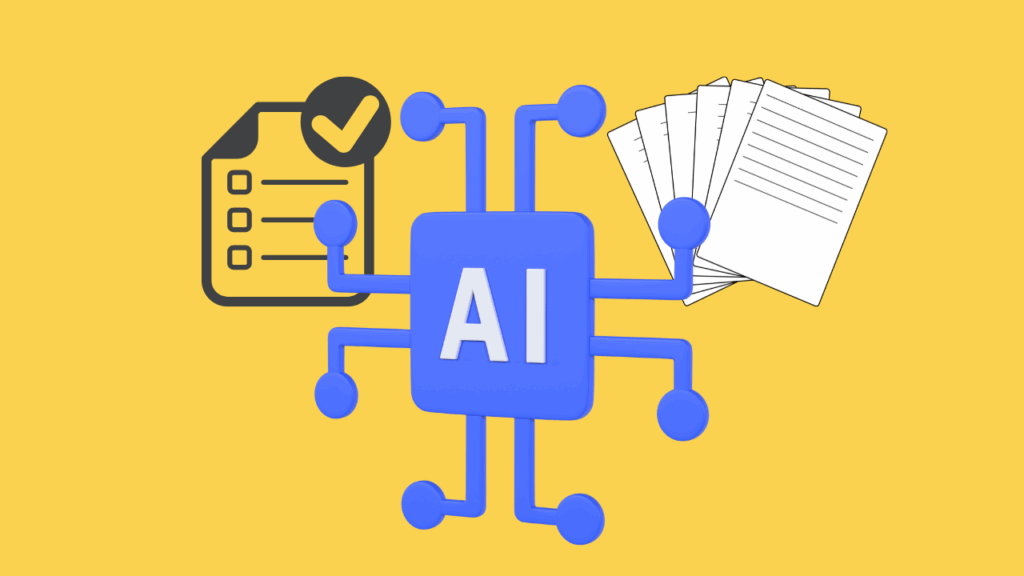Top AI Tools Every Researcher Should Know in 2025

AI tools can greatly simplify the research workflow for authors when used the right way. But with new tools being developed every day, how does one choose the best AI tools for academic writing and publishing? Let us understand this better by first learning where AI tools can actually help researchers.
AI Tools for Literature Review & Reference Management
AI Tools for Data Analysis & Visualization
AI Tools for Writing Research Papers
How AI Tools Help Researchers
Before we dive in, it is important to know that tools are only meant to be used as assistants and should NOT replace a researcher’s critical thinking abilities. That said, here’s how AI tools can speed up academic research.
- Improved efficiency: AI tools help efficiently scan through papers during literature review, saving considerable time and resources for researchers. They help in identifying patterns that can enable researchers to make discoveries, thereby enhancing the overall research quality.
- Leveling the playing field: Because of their analytical abilities and easy accessibility, integrating AI tools into research workflows has become easier for authors globally. This provides a level playing field in the publication industry, especially benefitting early-career researchers.
- Multipurpose abilities: AI tools can be used in various phases of the research workflow, streamlining the process substantially. For instance, there are AI tools for expediting literature reviews, drafting papers, performing data analysis, and managing references.
Here are top AI research tools that can fast-track your publication journey.
AI Tools for Literature Review & Reference Management
Searching for literature related to your research topic can be a tedious task. But with tools like R Discovery, Consensus, Scite, and Litmaps, the entire literature review process can be simplified.
| R Discovery | Consensus | Scite | Litmaps | |
| Purpose | Research discovery; Research reading; Daily recommendations customized for your area of interest. | Evidence consensus; Summarized content. | Citation evaluation; Identification of supporting or contrasting research ideas. | Visualized literature mapping; Discover related research through citation networks. |
| Key features | Personalized feed and reading recommendations; Smart summaries; New research alerts; Allows collaborations through shared reading lists; Mobile app available with multi-device sync; Has translation and audio options. | Consensus Meter to show agreement, inconclusive, or disagreement across papers; Summarized explanations; Export to citation managers. | See whether citations support, contrast, or simply mentioned; Dashboard to track citation trends, retractions, editorial notices; Browser extension available. | Visual literature maps to explore connections between topics; Alerts for new related articles; Shared citations & references, similar text, and common authors options available in filters. |
| Benefits for researchers | Excellent for staying updated on latest research; Helps in discovering new papers in your areas of interest; User-friendly reading flows; Easily accessible anywhere, anytime over mobile app. | Strong at summarizing what the evidence says; Gives a consensus view of research; Helpful for checking hypothesis. | Helps with evaluation & credibility; Good for verifying literature and spotting weak claims. | Good for visual thinkers as the literature mapping helps discover papers you might miss with keyword-only search; Useful in initial literature reviews. |
AI Tools for Data Analysis & Visualization
Tableau is a commonly used tool for data analysis and has a long track record for application in research and industry. More recently, tools like Julius AI and PowerDrill AI have also caught researchers’ attention.
| Julius AI | Tableau | PowerDrill AI | |
| Purpose | AI-powered data analysis tool; Upload data in different formats (CSV, Excel, Google Sheets) and chat with your data to get visualizations & insights; Run statistical tests. | Business intelligence, data visualization, & dashboards; Strong in visual exploration, integration, & BI analytics. | AI-first data analysis & visualization tool; Supports conversational analytics and lets you explore data via natural language; Automated insight generation. |
| Visualization and dashboard generation | Automatically generates charts & visualizations (bar/line/scatter etc.) from queries; Integrates visual output as part of insights. | Generates richly interactive dashboards; Outputs multiple chart types; Helps map & drill-down data using filters. | Generates visualizations in response to natural language queries; Turns raw data into charts quickly. |
| Natural language interface | Yes, lets you chat with your data; Ask questions in natural language to get insights, analyses, & visuals. | A new “Pulse” feature is added; Enhanced Q&A allows conversational queries. | Conversational questions in plain English helps the tool interpret data and show results. |
| Analytical capabilities | Offers built-in statistical tests (e.g., t-tests, correlation) as part of analysis. | Supports calculations, aggregations, analytics, forecasting, trend lines, custom calculations, & statistical functions. | Automatic generation of insights in the form of trends, anomalies, & correlations. |
| Benefits for researchers | Low technical barrier; Fast insight generation; Does not require heavy coding or BI setup; Good for exploratory phases. | Mature tool with rich visualization; Known for stable performance; Scalable to large datasets; Good for presenting results. | Rapid insight generation from raw data; Conversational interface speeds up exploratory work; Reduces friction when transforming raw data into digestible visuals. |
AI Tools for Writing Research Papers
Although tools like Grammarly, ChatGPT, and Perplexity AI are often used to aid writing, academic and research paper writing require more holistic tools like Paperpal, Jenni AI, and SciSpace.
| Paperpal | Jenni AI | SciSpace | |
| Purpose | Polish academic writing; Support with literature search & citing; Grammar checks, readability, & submission readiness; Focused on maintaining academic tone. | Drafting, structuring, & writing research papers; Helps with outlines, citations, & paraphrasing. | Literature discovery & comprehension; Helps with research summaries & semantic search in addition to writing assistance. |
| Citation & reference management | Strong research-and-cite function; Allows you to ask questions and gives answers with references; Supports multiple citation styles; Integrates easily with citation libraries. | In-text citation support available; Allows import of citations; Stores sources in research libraries. | Helps in citation generation; Lets you see content of sources and figure out what to cite; Allows semantic search to find relevant papers. |
| Writing & polishing | Builds research paper outlines; Aids paragraph structuring; Grammar & spell checks; Helps maintain academic tone; Paraphrasing with clarity; Ensures conciseness and helps in word reduction. |
Paraphrase & rewrite; Tone & writing style adjustment; Autocomplete features; Helps with drafting smoother prose. | Clarifies complex text; Has assisted writing features like paraphrasing & explaining; Assists in comprehension for enhanced writing. |
| Interaction with source material | “Chat with PDF”-style features; Extracts insights from full texts; Research feature to pull supporting literature while writing. | Generates inputs from files; Chat with your PDF feature available; Extracts content from uploaded documents. | Uses Copilot to chat with PDFs; Semantic search available; Understands complex sections and finds relevant literature from within PDFs. |
| Benefits for researchers | Great for polishing drafts, avoiding linguistic errors, & overcoming writer’s block; Streamlines the process from literature review to journal submission. | Excellent for early drafting and structuring of papers. | Strong in terms of aiding comprehension; Useful for researchers who need to ingest lots of material. |
Other AI Tools for Research
Here are two bonus tools that can help you in additional research tasks, such as graphical abstract creation and finding the best target journal.
1. Mind the Graph
With more and more journals demanding graphical abstracts, researchers need assistance in designing effective visual abstracts that match academic requirements.
- Mind the Graph is a tool that offers over 75,000 illustrations that are scientifically accurate.
- Pre-existing templates aid in deciding the best layout for your graphical abstract.
- The tool has graphics, icons, and illustrations suitable for various scientific fields, including biology, medicine, and molecular sciences.
- You can also use the tool to prepare conference posters, infographics, slides for presentations, and figures in the research paper.
2. Journal Finder
One of the challenges researchers face in their publication journey is identifying the right journal for their research.
- Journal Finder helps you determine the best journal suited for your research depending on your requirements.
- You can either upload your abstracts or completed manuscripts to get a list of journals that are most appropriate for your field.
- A journal report is included with the recommended journals, giving you a summary of similar published papers and common topics that match your research.
Break that writer’s block! Check out Paperpal and simplify your academic writing with AI assistance.










